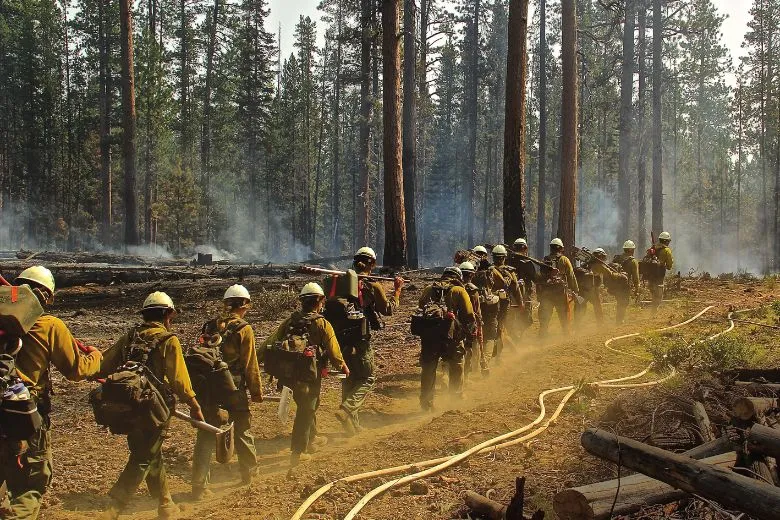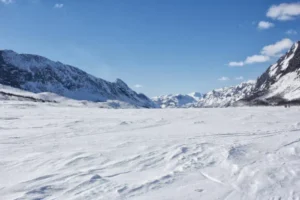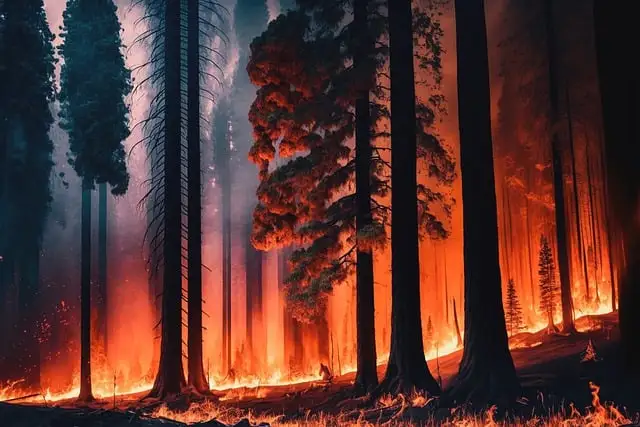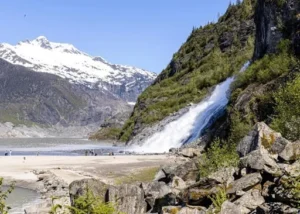The economic impacts of wildfires in Alaska can be significant. Wildfires have increased dramatically in Alaska, with a notable surge in 2023, leading to economic consequences.
Economic Ramifications of Alaska Wildfires
- Increased firefighting costs
- Potential decrease in tourism
- Health and safety impacts
- Property damage
- Insurance losses
- Higher fire insurance costs
2024 USDA Forest Service Budget Overview
The 2024 USDA Forest Service Congressional Budget Justification outlines key statistics related to wildfire management and Forest Service operations.
The budget request for the Wildland Fire Management account 2024 is $1,325,886,000, marking a notable increase of $233,100,000 (+21.3 percent) from the 2023 enacted levels.
Additionally, the Wildfire Suppression Operations Reserve Fund 2024 is set at $350,000,000, reflecting a $10,000,000 (+2.9 percent) rise compared to the 2023 enacted level.
Forest Service Operations discretionary appropriations are estimated at $1,316,499,000, with 2,548 Full-Time Equivalents (FTEs) in 2024, a slight decrease from the previous year.
The Bipartisan Infrastructure Law (P.L. 117-58) has allocated significant funding to the Forest Service, with $210,369,000 and 98 FTEs in 2022 and $71,562,000 and 170 FTEs in 2023 and 2024. This emphasizes the ongoing support for addressing wildfire risks and sustaining Forest Service operations.
Average Firefighting Costs
The economic impact of wildfires in Alaska can be substantial, particularly evident in the cost of wildfire suppression efforts. The highest recorded spending was $110 million in 2004, averaging $10 million annually. A recent estimate projected an increase in wildfire suppression costs by $25 million per year above the 2002-2013 average. Federal costs account for 32%, while state and local costs comprise 68% of total suppression expenses.
Federal Spending on Fire Suppression
The financial burden of wildfire suppression has escalated over the years. Between 1998 and 2002, federal spending on fire suppression averaged $994 million annually. This figure dramatically increased to nearly $3 billion annually between 2018 and 2022. This surge reflects wildfires’ growing severity and frequency, necessitating more extensive and costly firefighting efforts.
Indirect Economic Impacts of Wildfires in Alaska
In addition to direct costs, wildfires have indirect economic impacts. For instance, tourism businesses suffer short-term losses if visitors avoid recently burned areas. The increasing frequency and severity of wildfires in Alaska, driven partly by climate change, exacerbate these issues. This leads to higher firefighting costs, health and safety impacts, property damage, insurance losses, and long-term increases in fire insurance costs for homeowners and businesses.
What Industries are Most Affected by Wildfires in Alaska?

1. Forestry:
Alaska faces a significant challenge in its forestry sector due to wildfires. The state has witnessed the highest average of acres burned annually since 2002, with an alarming figure of 1.6 million acres succumbing to wildfires yearly. This directly threatens timber resources, impacting the forestry industry’s sustainability and economic viability.
2. Tourism:
Alaska’s tourism attraction sector bears the brunt of wildfires, experiencing short-term losses as visitors avoid areas affected by such natural disasters. The escalating size and frequency of wildfires in the region align with climate change predictions, deepening the challenge for the tourism industry. Fires that persist over winter or reignite in the same locations after a brief respite further compound the sector’s woes, making attracting visitors to affected areas increasingly difficult.
3. Agriculture:
Wildfires disrupt farming activities in Alaska, threatening agricultural productivity and farmers’ livelihoods. Smoke, ash, and fire damage hamper farming operations, potentially reducing yields and financial losses. Such challenges highlight the agriculture industry’s vulnerability to the adverse effects of wildfires in the region.
4. Outdoor Recreation:
Businesses catering to outdoor recreation, such as hunting and fishing outfitters, face significant setbacks when recreational areas are closed due to fire risks or active wildfires. The economic repercussions extend beyond immediate losses, affecting communities reliant on outdoor activities for sustenance.
The closure of recreational areas not only impacts local businesses but also dampens the allure of Alaska as a prime destination for outdoor enthusiasts, further straining the region’s economy.
Conclusion
The multifaceted economic impacts of wildfires in Alaska underscores the importance of proactive measures to mitigate these effects. As climate change continues to drive the increasing frequency and severity of wildfires, understanding and addressing these economic consequences become ever more crucial for the resilience of communities like Bethel.












